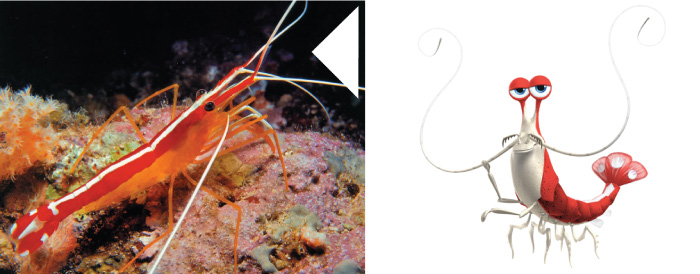

The Banded Cleaner Shrimp is distributed throughout the Indo-Pacific region from the Red Sea and South Africa to the Hawaiian and Tuamotu Islands. Although not found in the eastern Atlantic, it can be found in the tropical waters in the western Atlantic from Bermuda and off the coast of North Carolina to the gulf of Mexico and southern Florida. The Banded Shrimp can be commonly found in the shallow waters of Bermuda. Just beyond the low tide line, these shrimp are found to inhibit low turbulent waters of about 2 to 4 meters deep where reef fish are abundant. These shrimp make homes out of crevices in rocks, undercut mats of rhizomes of the turtle grass, and disregarded man made objects (such as buckets and tires). The cleaner shrimp are very territorial and remain within a one meter area for as long as a year.
The Banded Cleaner Shrimp has a unique coloration and body shape. It has striking red and white bands across its body with fairly long pinchers and extra long white antennae. Combined with its prickly body texture, this peaceful member of the Stenopodidae family brings much interest in the reef.
Viola! He is clean.
Interestingly, members of the Stenopodidae family are known as "Boxing Shrimp" because of the large pinchers on their third set of legs. These pinchers are often held erect and give the Banded Shrimp the appearance of a boxer ready to fight. Though the Banded Shrimp can be aggressive towards other shrimp, most are peaceful towards fish, corals, and most invertebrates you’d find in an aquarium.
The cleaner shrimp is native to the oceans of Indonesia and is perhaps the most widely distributed shrimp in the sea. It usually hangs upside-down in caves or crevices, with only its antennae emerging from the hole. While molting, the Banded Shrimp will often hide from sight for 1-2 days in rocks and other objects. The Banded Shrimp rarely exceeds 3 inches, 6 inches with the antennae. The male is usually smaller than the female.